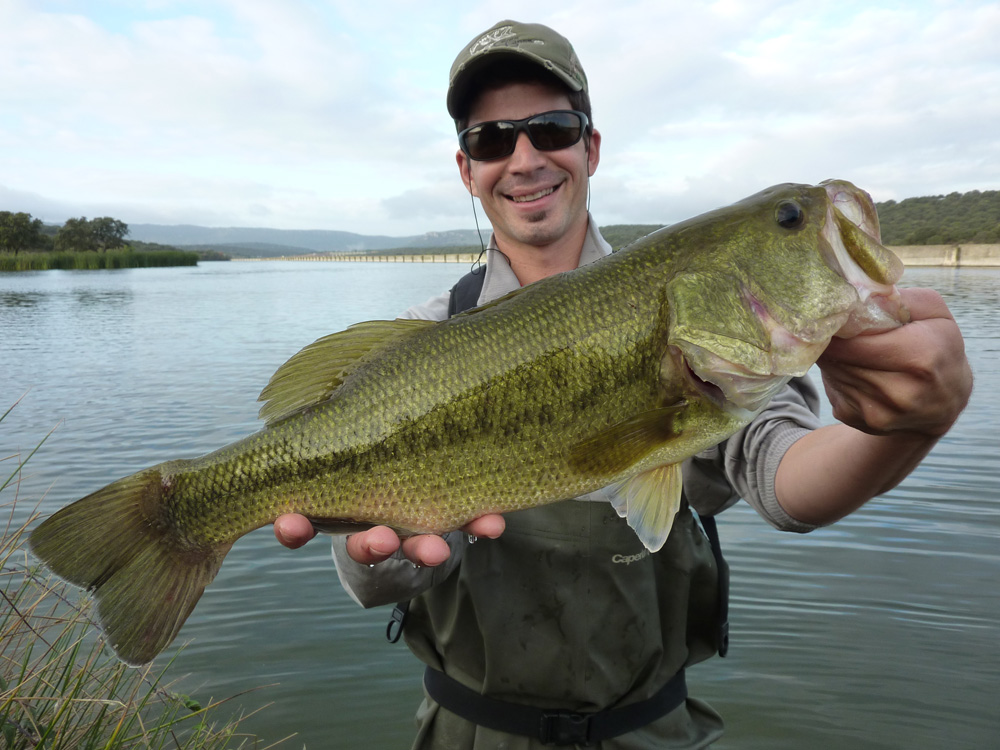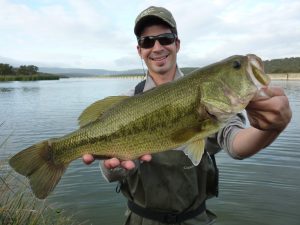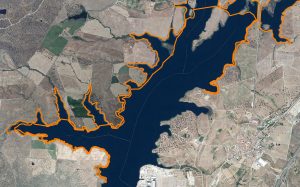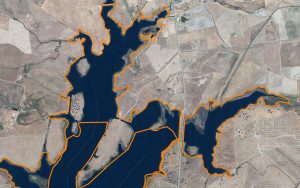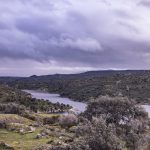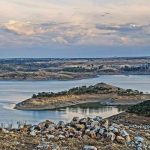Characteristic of Almaraz lake
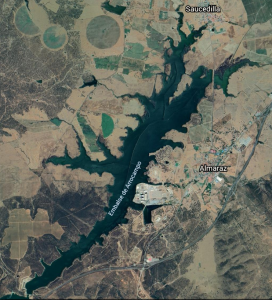
With a flooded area of 776 hectares, Almaraz lake is very peculiar, because its main function is to cool the turbines of the Almaraz nuclear power plant. It is located in the east of the province of Cáceres and its level is stable throughout the year. The reservoir collects water from the River Tajo, this water is propelled to the nuclear power plant itself (channelled through walls located in the centre of the reservoir) and is returned to the River Tajo after a long journey in which it loses temperature.
Due to its peculiar characteristics it has become, in addition to sport fishing, a reference for the observation of waterfowl, housing very important populations of some endangered species.
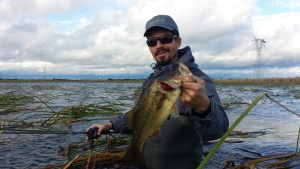
The area in which the water has not yet reached the plant is called the “cold” area and the rest of the reservoir is considered the “hot” area. The water has a temperature several degrees higher than that of the surrounding reservoirs, due to this cooling function. This fact added to the high level of eutrophication means that they are always turbid, to a greater or lesser extent.
Bottom composition and structures
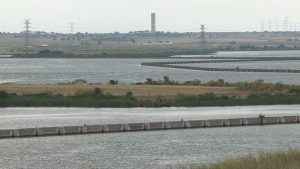
The bottom of the reservoir is practically flat, as it has been built by excavating in a similar way to a gravel pit and only in some areas do we find the bottom full of small rounded stones and pebbles. Most of the reservoir’s bottom is covered with silt and mud, from the decomposition produced by the abundant reeds and cattails that surround it.
The only anthropic structures we find are the slopes of some surrounding roads and the aforementioned wall in the “center” of the reservoir, which is practically impossible to reach from the shore with our lures.
Vegetation and cover
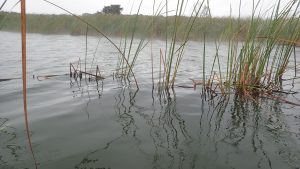
The reservoir is almost entirely surrounded by cattails, reeds and other plants linked to wetland ecosystems. This vegetation is very dense, especially in the warmer months, making the reservoir practically inaccessible from most of its banks, except for the accesses “built” by fishermen.
In this tangle of vegetation, most of the fish find shelter and food, so we must prepare ourselves to fish in what we call “heavy cover”, although the currents present in the most central areas of the reservoir will also allow us to fish in “open water” with other types of lures.
Main fish species

It is a reference reservoir for black bass fishing in winter, since the higher temperature of its waters contributes to the fish maintaining high levels of activity, even in the coldest months.
- Black Bass. The density is very high, finding fish of all sizes in practically all areas of the reservoir. They do not usually reach very high weights, as their high level of activity throughout the year prevents them from accumulating the necessary reserves. That’s why we will find fish with a very elongated morphology.
- Zander. It has entered the Almaraz reservoir from the Tajo River and it seems that its densities are not very high.

Black bass +50 cm en la zona fría - Catfish. Just like the zander has entered through the Tajo but its populations are growing in recent years. Specimens over 150 cm long have already been caught.
- Carp. The carp is very abundant in this reservoir but its average size is rather small (between 1 and 2 kg). The most used techniques by the fishermen are feeder and match fishing.
Baitfish in Almaraz lake
The crawfish has always been the main prey, although in recent years bleak have also come in from the Tajo. There is also presence of mosquitofish, sunfish and some frogs.
Access and navigation
Navigation is forbidden in Almaraz reservoir, so fishing is only possible from the shore. We must bear in mind that a large part of the reservoir is closed from March 1 to August 1 because it is an SPA area. The sections highlighted in orange are those where no fishing is allowed during this period.
Due to the enormous density of vegetation and the fairly uniform depths of the shores, the use of the wader is practically indispensable. It is important to locate the accesses to the reservoir beforehand, since sometimes there are stretches of bank several hundred meters long that are impassable due to the thickness of the cattails.

